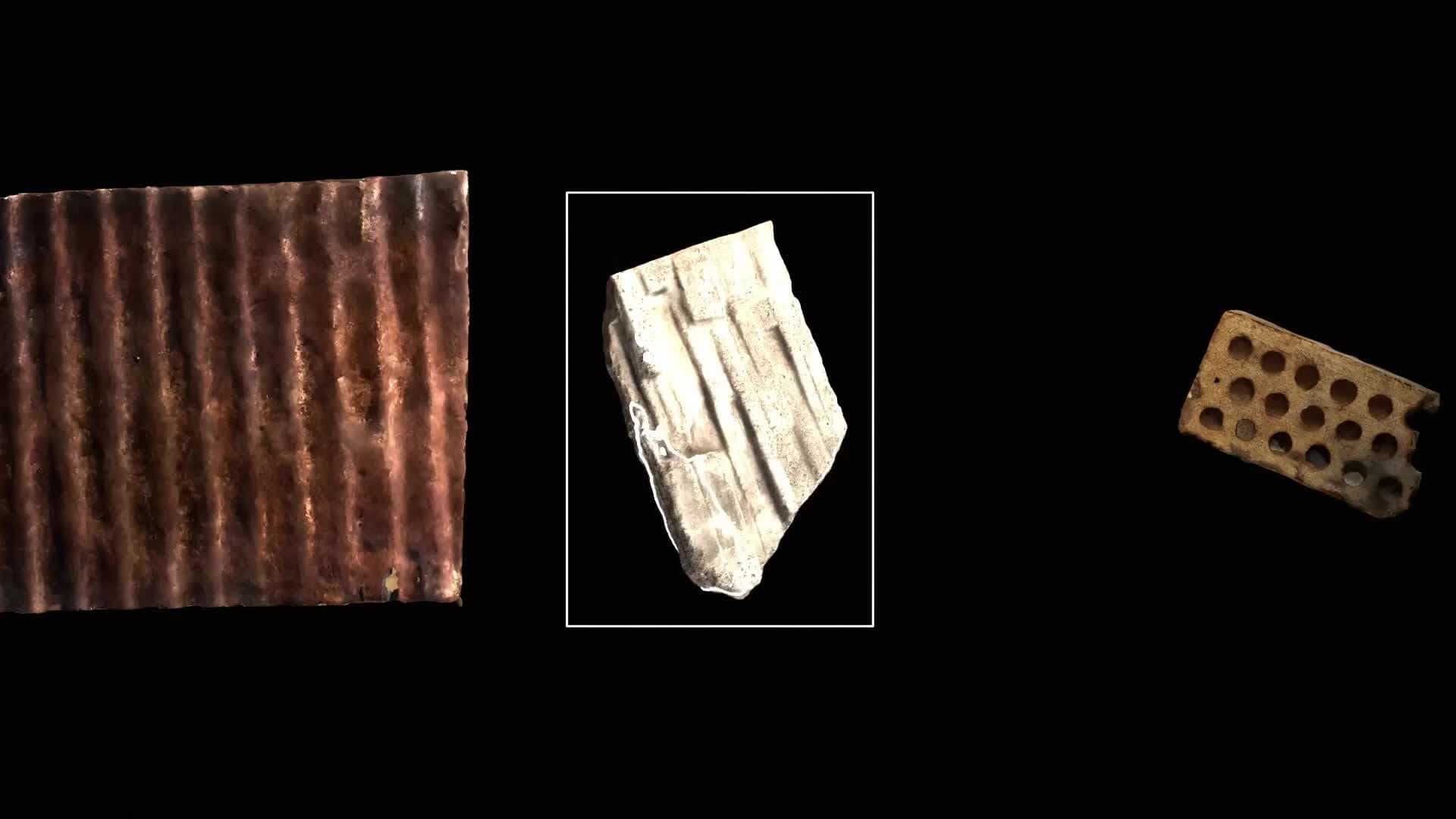
Circularity on the Edge
Circularity on the Edge
Circularity on the Edge
Biennale Architettura 2025
19th International Architecture Exhibition
Biennale Architettura 2025
19th International Architecture Exhibition
Biennale Architettura 2025
19th International Architecture Exhibition
Exhibition
Circularity on the Edge is a research-based architectural and art installation by Kateryna Lopatiuk and Herman Mitish, part of the 2025 Venice Architecture Biennale curated by Carlo Ratti. The installation uses AI to analyse drone footage of war-damaged buildings in Bucha, Ukraine, identifying reusable materials like brick, concrete, and wood. It merges digital analysis and physical fragments to question: can destruction become a resource for reconstruction? The project highlights Ukraine’s innovative spirit and advocates for circularity in post-war recovery.
Circularity on the Edge is a research-based architectural and art installation by Kateryna Lopatiuk and Herman Mitish, part of the 2025 Venice Architecture Biennale curated by Carlo Ratti. The installation uses AI to analyse drone footage of war-damaged buildings in Bucha, Ukraine, identifying reusable materials like brick, concrete, and wood. It merges digital analysis and physical fragments to question: can destruction become a resource for reconstruction? The project highlights Ukraine’s innovative spirit and advocates for circularity in post-war recovery.
Circularity on the Edge is a research-based architectural and art installation by Kateryna Lopatiuk and Herman Mitish, part of the 2025 Venice Architecture Biennale curated by Carlo Ratti. The installation uses AI to analyse drone footage of war-damaged buildings in Bucha, Ukraine, identifying reusable materials like brick, concrete, and wood. It merges digital analysis and physical fragments to question: can destruction become a resource for reconstruction? The project highlights Ukraine’s innovative spirit and advocates for circularity in post-war recovery.

Research
Initiated during Kateryna Lopatiuk’s exchange at MIT and further developed at NGO ReThink, the project evolved into a scalable method for mapping reusable materials in war-affected areas. An AI model scans aerial footage, classifying materials from destroyed structures for potential reuse, recycling, or safe disposal.
Initiated during Kateryna Lopatiuk’s exchange at MIT and further developed at NGO ReThink, the project evolved into a scalable method for mapping reusable materials in war-affected areas. An AI model scans aerial footage, classifying materials from destroyed structures for potential reuse, recycling, or safe disposal.
Initiated during Kateryna Lopatiuk’s exchange at MIT and further developed at NGO ReThink, the project evolved into a scalable method for mapping reusable materials in war-affected areas. An AI model scans aerial footage, classifying materials from destroyed structures for potential reuse, recycling, or safe disposal.
The resulting open database is both a research tool and a foundation for actual reconstruction planning. Combining digital sensing, environmental technologies, and material memory, the project proposes a shift in how we view ruins—not as waste, but as architectural resources. This methodology links sustainability with recovery, challenging conventional ideas of rebuilding.
The resulting open database is both a research tool and a foundation for actual reconstruction planning. Combining digital sensing, environmental technologies, and material memory, the project proposes a shift in how we view ruins—not as waste, but as architectural resources. This methodology links sustainability with recovery, challenging conventional ideas of rebuilding.
The resulting open database is both a research tool and a foundation for actual reconstruction planning. Combining digital sensing, environmental technologies, and material memory, the project proposes a shift in how we view ruins—not as waste, but as architectural resources. This methodology links sustainability with recovery, challenging conventional ideas of rebuilding.

Core Team
The project is developed by curator Kateryna Lopatiuk together with a group of artists and architects and friends from Ukraine spanning multiple domains of practice and expertise.
The project is developed by curator Kateryna Lopatiuk together with a group of artists and architects and friends from Ukraine spanning multiple domains of practice and expertise.
The project is developed by curator Kateryna Lopatiuk together with a group of artists and architects and friends from Ukraine spanning multiple domains of practice and expertise.

Curator

Co-curator, Software Architect

Architect, Set Designer

Projection Mapping

Graphic Design and Production

Fundrasing and Partnerships
Extended Team
The project would not be possible without unlimited dedication and support from the people who worked relentlessly often without any resources and compensation just for the community and for the idea of bringing the project to Venice. This is the core without which this project would never be possible at any stage of its realisation - starting from prototyping and preparations in Kyiv, to the final realisation in Venice and public program.
The project would not be possible without unlimited dedication and support from the people who worked relentlessly often without any resources and compensation just for the community and for the idea of bringing the project to Venice. This is the core without which this project would never be possible at any stage of its realisation - starting from prototyping and preparations in Kyiv, to the final realisation in Venice and public program.
The project would not be possible without unlimited dedication and support from the people who worked relentlessly often without any resources and compensation just for the community and for the idea of bringing the project to Venice. This is the core without which this project would never be possible at any stage of its realisation - starting from prototyping and preparations in Kyiv, to the final realisation in Venice and public program.

Artist, Composition Design, Circular Economy

Architect, Organisation of Space and Volunteers

Architect, Video Production

Architect, Volunteer

Audio and Visual Artist, Projection Mapping

Projection, Audio and Video Setup

Audio Artist, Sound Design

Photo and Video Documentation

SMM, Communication
Partners
The project is developed in collaboration with the Ukrainian NGO ReThink, which works to advance the circular economy in Ukraine, Ostriv Platform and Photinus Studio.
The project is developed in collaboration with the Ukrainian NGO ReThink, which works to advance the circular economy in Ukraine, Ostriv Platform and Photinus Studio.
The project is developed in collaboration with the Ukrainian NGO ReThink, which works to advance the circular economy in Ukraine, Ostriv Platform and Photinus Studio.